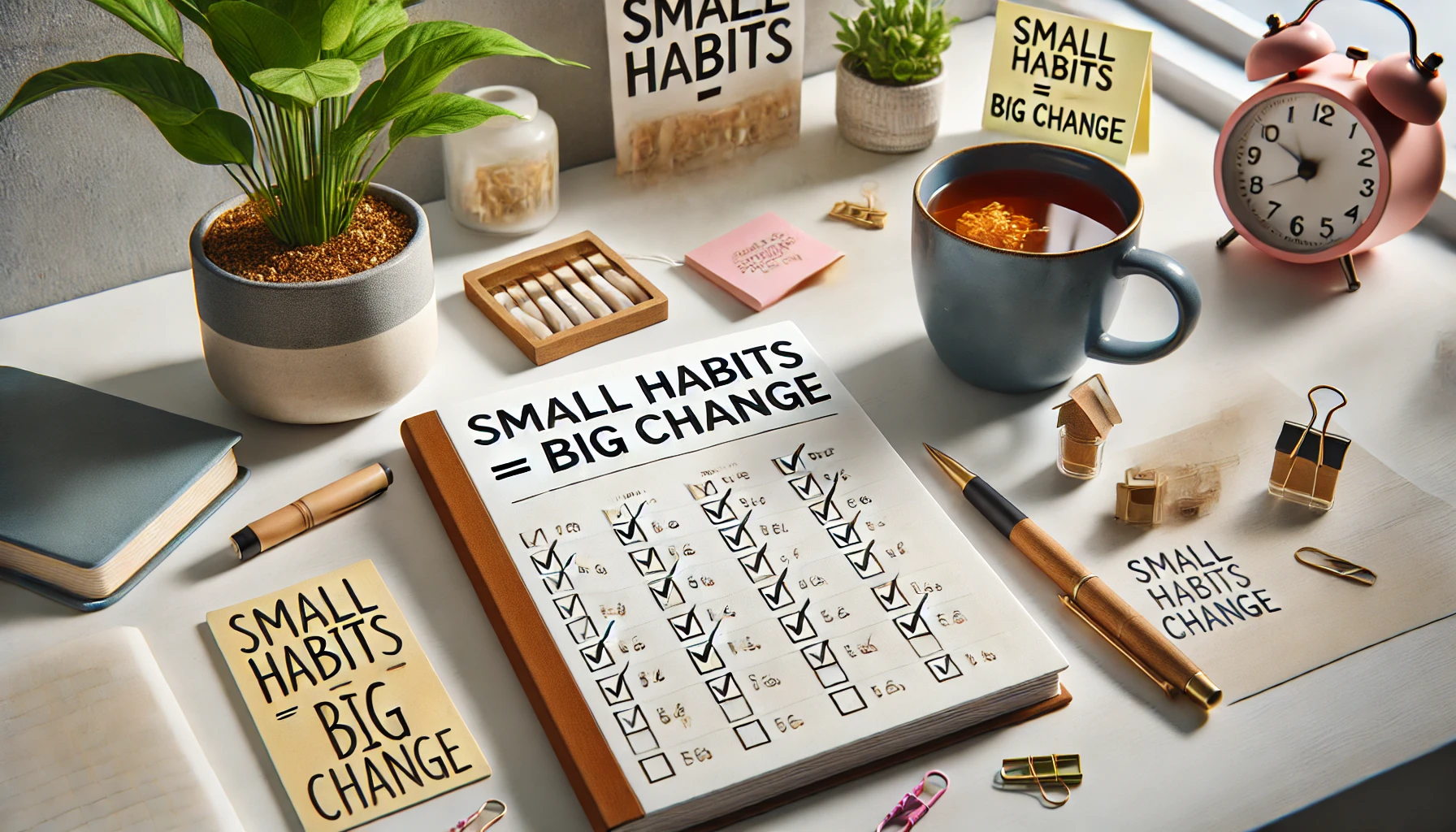We often think that big results require big actions. But real, lasting change usually comes from small habits, done consistently over time.
The secret? It’s not intensity—it’s consistency. Tiny behaviors, when repeated daily, compound into massive transformation.
In this article, you’ll learn why small habits matter, how to build them into your life, and how to use them to create meaningful change—without burning out.
Why Small Habits Are So Powerful
Small habits are easy to start, easy to repeat, and less likely to trigger resistance. And the compound effect—the idea that little improvements add up—turns these habits into real progress.
💡 Think about this:
- Writing 200 words a day = a book in 6 months
- Saving $5 a day = $1,825 a year
- Stretching for 5 minutes = increased flexibility over time
- Reading 10 pages daily = 12+ books per year
Little by little becomes a lot.
Step 1: Focus on Identity, Not Just Results
Don’t just ask, “What do I want to achieve?”
Ask, “Who do I want to become?”
Shift from:
- “I want to run a marathon” → “I’m becoming a runner”
- “I want to read more” → “I’m a reader”
- “I want to eat healthy” → “I’m someone who takes care of my body”
When your habits align with your identity, they stick.
Step 2: Make It So Small You Can’t Fail
Start ridiculously small. Want to build a reading habit? Start with one page. Want to journal daily? Write one sentence.
Why it works:
- It lowers mental resistance
- It builds momentum
- It creates a “win” you can feel good about
💡 Consistency first. Intensity later.
Step 3: Anchor Your Habit to Something You Already Do
This technique is called habit stacking, made popular by James Clear in Atomic Habits.
Formula:
After I [current habit], I will [new habit].
Examples:
- After I brush my teeth, I will stretch for 30 seconds
- After I make coffee, I will write 1 line in my journal
- After I sit down at my desk, I will set a 25-minute timer (Pomodoro)
Attaching a new habit to an existing one makes it easier to remember and do.
Step 4: Use Visual Cues and Reminders
Set up your environment to support your habit:
- Place your workout clothes where you can see them
- Keep a book next to your pillow
- Put a glass of water on your desk
Make the habit obvious, attractive, and convenient.
Step 5: Track Progress (But Keep It Simple)
Use a habit tracker or calendar to mark your progress. Seeing the streak builds motivation and accountability.
Try:
- ✔️ Checkmarks
- ✅ Habit tracking apps (like Habitica, Done, or Streaks)
- 📆 Visual calendars
But don’t obsess—missed a day? Just start again tomorrow.
Step 6: Celebrate Tiny Wins
Reinforce your behavior by rewarding yourself (even mentally) every time you follow through.
Say:
- “Nice job.”
- “I’m doing this.”
- “That felt good.”
Small wins train your brain to associate the habit with positive feelings, which increases repetition.
Step 7: Be Patient—The Results Will Come
Change doesn’t happen overnight. But with consistency, everything adds up.
Remember:
- Day 1: It feels pointless
- Day 10: It feels boring
- Day 30: It feels normal
- Day 90: It feels automatic
Trust the process. Keep showing up.
Real-Life Example: The Power of 1 Push-Up
A man once committed to doing just one push-up a day. It sounded silly—but he never missed it. Over time, 1 became 5, then 10, then a full workout routine.
Why? He built the identity first: “I’m someone who exercises every day.”
Final Thoughts: Tiny Steps, Massive Results
Small habits are like seeds. You plant them with intention. You water them with consistency. And eventually, they grow into something powerful.
You don’t need to overhaul your life today. You just need to take one step—and then another. Because big change doesn’t happen all at once. It happens one small habit at a time.

Daniel Carter believes that small daily changes lead to extraordinary results. Through simple and effective strategies, he inspires readers to take control of their routines, overcome procrastination, and unlock their full potential.











